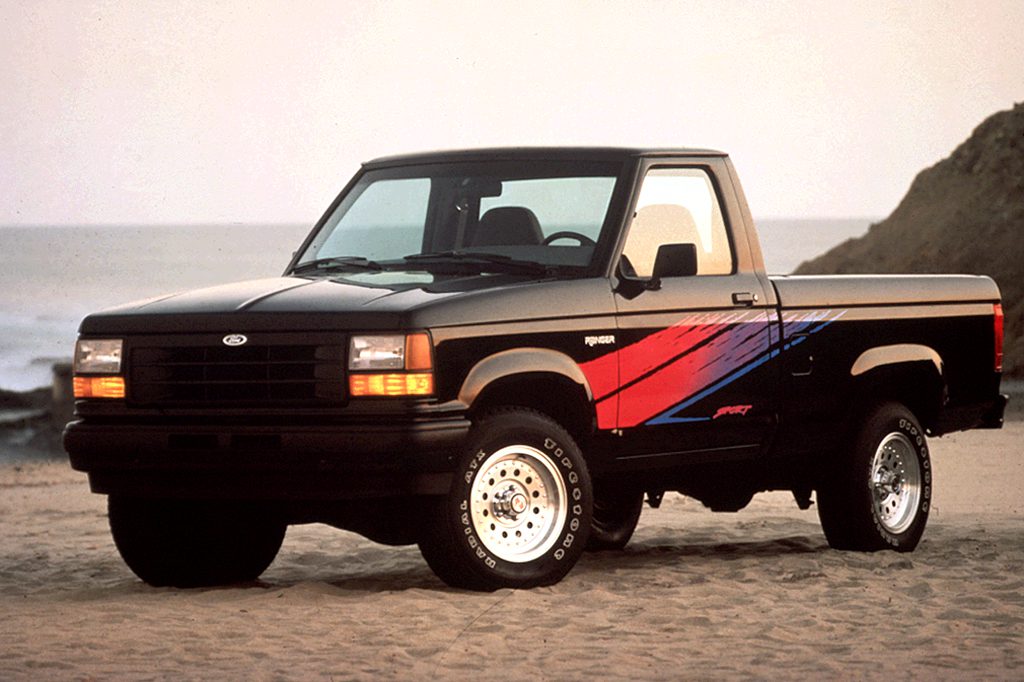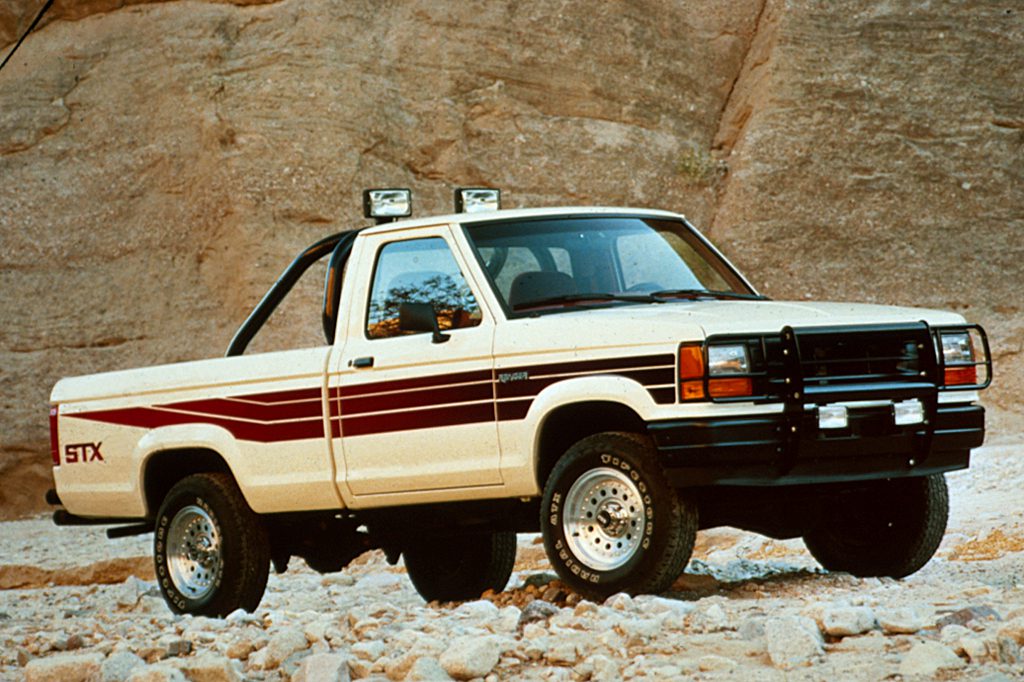| Compact pickup truck; Built in USA |
|
|
| Good condition price range: $1,000 – $1,900* |

1992 Ford Ranger regular cab

1990 Ford Ranger STX regular cab

1991 Ford Ranger Sport regular cab

1991 Ford Ranger XLT SuperCab extended cab

1992 Ford Ranger SuperCab extended cab
| Pros: |
|
| Cons: |
|
With a Ranger, we’re talking quality and refinement in a pleasant vehicle that’s easy to live with. We’d put it first on our early ’90s shopping list, but also take a close look at Ranger’s closest competitors: the Chevrolet S10 and similar GMC Sonoma.
Overview
Launched for 1983, Ranger became the best-selling compact pickup in America. For 1989, Rangers were restyled to resemble the bigger F-Series, and rear antilock brakes were installed on all models. SuperCab models had a 6-foot cargo box and 125-inch wheelbase. Regular-cab Rangers rode a 107.9-inch wheelbase with a 6-foot cargo box, or 113.9-inch with a 7-footer. A 2.3-liter 4-cylinder engine was standard in regular-cab Rangers and 2-wheel-drive SuperCabs, with a 2.9-liter V6 optional. Also available for all models: a 144-horsepower, 4.0-liter V6. Rangers might have 5-speed manual shift or 4-speed overdrive automatic; 2- or 4-wheel drive. On-demand 4WD was a part-time system, operated either by pushbutton (Touch Drive) or via a floor lever.
Yearly Updates
| 1991 Ranger Pickup A new regular-cab Sport model debuted for 1991, and a 3.0-liter V6 replaced the 2.9-liter as optional engine in 2-wheel-drive models. |
| 1992 Ranger Pickup Head restraints were added to outboard positions on vinyl bench seats. Rangers with power steering added a front stabilizer bar. |
